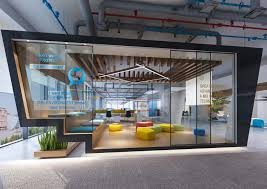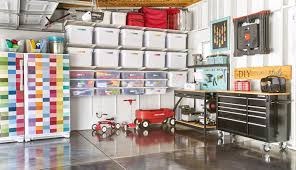Designing Efficient, Low-Maintenance Spaces for Modern Business Premises

Businesses today aim to create spaces that run efficiently, last longer, and cost less to maintain. The goal is not only to make a good impression but also to keep daily operations smooth. Efficient design reduces cleaning time, extends the life of materials, and limits disruptions. Every decision about layout, materials, and finishes contributes to the long-term value of a space.
The real cost of poor maintenance planning
Many businesses overlook maintenance until problems appear. A leaking roof, chipped floor, or worn surface often leads to expensive repairs. These issues also interrupt work and lower staff morale. Poor material selection or lack of upkeep planning increases costs over time. When maintenance is treated as an afterthought, even well-designed spaces lose function and appeal.
Planning for durability begins before construction or renovation. Businesses should consider how much traffic a space receives, how often it is cleaned, and which materials withstand wear. A space that looks modern but requires constant attention is not efficient. Real efficiency means choosing materials and layouts that stand up to use and remain easy to manage.
Smart design starts with durable materials
The foundation of an efficient space lies in the materials. Durable, nonporous, and easy-to-clean surfaces help businesses save on maintenance and replacement costs. In high-traffic areas, this choice becomes even more important.
One strong example is the use of stainless steel restroom partitions. They resist corrosion, moisture, and scratches, making them ideal for environments where hygiene and durability are critical. Stainless steel is also easy to sanitize, reducing the time and chemicals needed for cleaning. Unlike materials that degrade or absorb moisture, it maintains a clean, professional appearance even after years of use.
The same principle applies to other surfaces. Countertops, fixtures, and wall coverings should resist damage and require minimal maintenance. Selecting materials that retain their quality reduces repair costs and prevents operational delays. The fewer maintenance demands a facility has, the more time staff can dedicate to productive work.
The role of layout and accessibility in maintenance efficiency
A well-designed layout simplifies maintenance and reduces long-term costs. When maintenance teams can easily reach fixtures, clean surfaces, and service utilities, operations remain smooth. Narrow corridors, inaccessible ducts, or poorly placed utilities complicate simple tasks and increase downtime.
Accessibility should be built into every part of a facility. Fixtures, cleaning stations, and storage should be placed for convenience. Wide hallways and open layouts help cleaning equipment move freely and reduce the risk of damage. A simple, organized floor plan also improves safety and visibility.
Maintenance efficiency improves when designs consider daily routines. For instance, restrooms located near plumbing lines simplify inspection and repair. Electrical systems with clear access points prevent unnecessary wall damage during upgrades. When layout decisions prioritize function, maintenance becomes faster, safer, and cheaper.
Choosing the right surfaces and finishes
The type of surface and finish used in a space influences how often it needs cleaning or replacement. Smooth, sealed finishes are easier to maintain than textured or absorbent materials. They also help control hygiene by reducing areas where dirt or bacteria can collect.
Flooring is a major factor in maintenance planning. Choosing durable materials suited to the level of foot traffic saves time and money. The comparison between laminate and vinyl options, explained in this flooring guide, shows how finish, texture, and resistance affect both cost and upkeep. Floors in commercial spaces must handle wear, moisture, and cleaning products without losing quality.
The selection of wall coatings and paints is crucial. Opting for high-quality, washable finishes ensures a lasting, fresh appearance. In humid environments, using moisture-resistant paints is vital to prevent peeling and mold growth. Ultimately, choosing low-maintenance finishes not only reduces upkeep but also consistently upholds professional standards.
Integrating sustainability with low maintenance
Sustainability and efficiency often overlap. Materials that last longer generate less waste and reduce environmental impact. Low-VOC paints, recycled composites, and responsibly sourced wood products improve air quality while lowering replacement frequency.
Sustainable design also supports cost control. Energy-efficient lighting, automated climate systems, and natural ventilation reduce operating expenses. Long-lasting materials minimize waste from frequent replacements. When durability aligns with sustainability, the business gains both economic and environmental value.
Modular construction is another sustainable approach that enhances maintenance efficiency. Modular elements allow for easy replacement or upgrading without major renovation. A single worn component can be changed without disrupting the entire system. This method reduces material waste and downtime, extending the overall usability of a facility.
Balancing aesthetics with practicality
A well-maintained business environment also reflects professionalism. However, visual appeal should not come at the cost of practicality. Efficient spaces can still look elegant, but design choices should support durability.
Neutral tones, matte finishes, and stainless accents create modern looks that hide minor wear. Surfaces that resist stains and fingerprints maintain their appearance between cleanings. Strategic color choices can make maintenance easier. For example, darker shades on high-contact areas conceal smudges, while lighter walls keep spaces bright and open.
To achieve both a polished aesthetic and long-term value, select durable, long-lasting materials for fixtures, partitions, and furniture, such as stainless steel, treated wood, or composite panels. By aligning appearance and functionality with the brand’s aesthetic, businesses communicate reliability and attention to detail while minimizing upkeep challenges.
Maintenance as a design principle
Maintenance should not begin after construction ends. It should be integrated into the design process. Every surface, fixture, and layout decision should support easy cleaning and servicing. Designing for maintenance reduces both cost and disruption over time.
Standardizing materials and fixtures simplifies procurement and replacement. Using the same paint type, tile size, or partition model across facilities allows faster repairs. Clearly labeled service points and well-documented maintenance schedules ensure accountability.
Routine maintenance is easier when the design supports it. Built-in access panels, drain points, and protective coatings reduce the effort required for inspection and cleaning. Automated systems for lighting, climate, or security also reduce manual intervention. Businesses that plan maintenance into design extend their investment’s lifespan.
Designing a facility with a focus on maintenance also significantly enhances safety. Maintaining clean environments reduces hazards like slips, minimizes clutter, and protects equipment from damage. When the entire facility is designed to promote organization and easy access, staff and clients encounter fewer interruptions, fostering a culture of efficiency in the workplace.
A long-term approach to efficient design
Building or renovating with maintenance in mind saves resources for years to come; a facility designed for efficiency costs less to run and manage as it adapts better to future needs.
An efficient, low-maintenance space reflects foresight; it shows that the business values reliability, hygiene, and productivity. Planning for maintenance from the start helps prevent unnecessary expenses later. This mindset encourages sustainable growth and builds trust among employees, clients, and visitors.
Modern workplaces evolve, but their core needs remain constant: safety, efficiency, and comfort. By choosing durable materials, practical layouts, and reliable finishes, businesses create spaces that last. Maintenance becomes easier, operations run smoother, and every square meter adds value to the organization.
The best business spaces do more than look good. They perform consistently, require little upkeep, and adapt to change. With the right design principles and materials, efficiency becomes part of the structure itself. The result is a professional, sustainable environment that supports daily work and long-term success.



